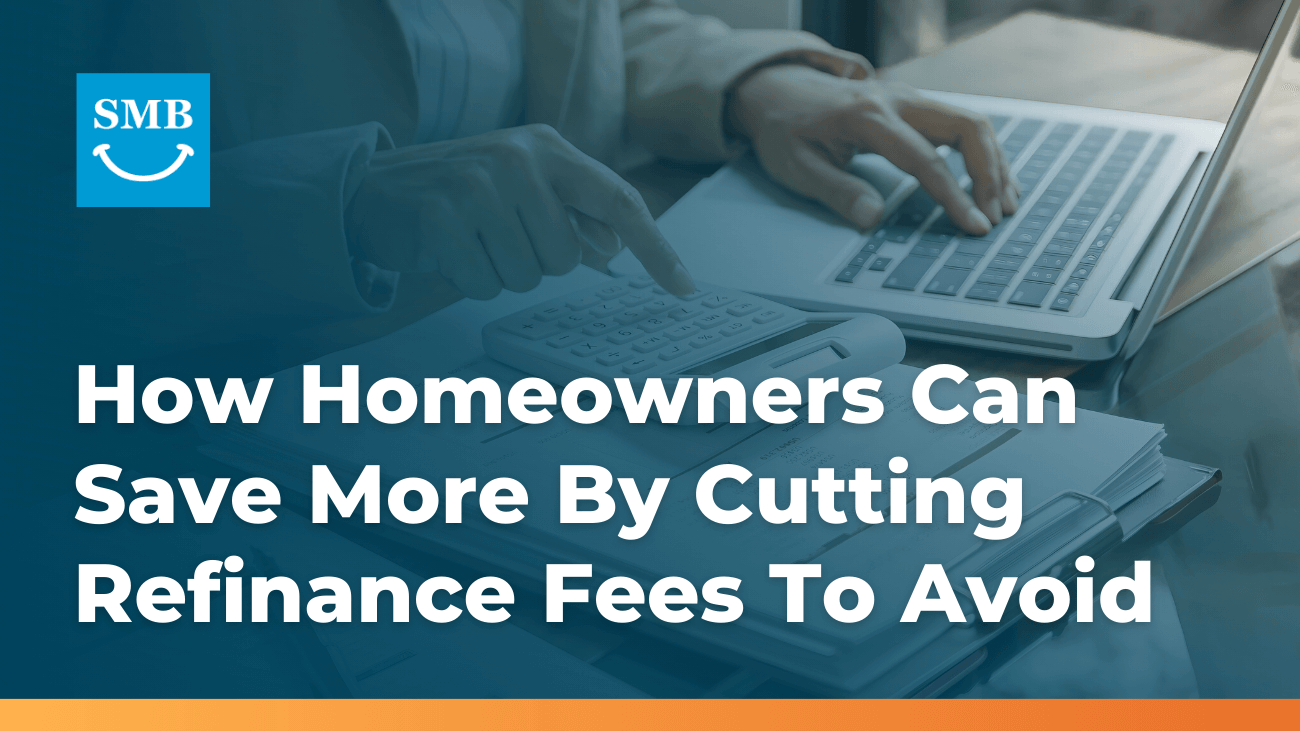Ultimate Seattle Mortgage Loan Documents Checklist

Check out all the documents you might need for your next home loan so that you can ace the process and get financed fast.
With homeownership rising, and home sales up by around 20% or more across the US, it is clear that buying a home is still a top priority for the majority of those residing in America. With rents still sky high in the Seattle area, and mortgage interest rates as historic lows it makes more sense to buy versus rent than ever.
With tech jobs, 2,500 miles of seawater, and a lack of personal income state tax (yes, you read that right) there are reasons people choose to live here.
People are moving in, moving up and switching from wasting money on rent to benefiting from growing equity in their own homes.
It’s no secret that there can be a lot of documents involved in getting a mortgage. So, heere is your guide to all the items you’ll need to fast track your application and refinance or purchase your next home with the least amount of stress.
Here's the ultimate checklist of mortgage documents you need to hasten your application!
A Quick Look at the Mortgage Loan Application
Like with any business transaction, mortgages involve paperwork. But in this case, seeing as it involves so much more money, it goes without saying that mortgage applications usually equate to more documents.
After all, the average mortgage debt in the U.S. amounts to $202,284. In Washington State, thanks to our higher house prices it's at an average of $262,641.

Put yourself in the shoes of lenders. If you're the one doing the lending, you'd also want to make sure you can trust the borrower to return the borrowed money, wouldn't you? And that the property your are lending against is worthy collateral.
As such, it's only reasonable to expect them to require you to submit documentation proving you can make good on your promise to repay. In addition to an application form, you'd also have to sign several disclosures. It's only after this that the actual mortgage process begins.
So, what are these disclosures? Here are some of the most important to name a few:
- Truth in Lending
- Loan Estimate (once known as the Good Faith Estimate)
- Closing disclosure (previously called the HUD-1 settlement statement)
- Credit Report disclosure
- Release form for your Tax Transcripts
Keep in mind that upon signing these disclosures, you give the lender permission to collect sensitive information about yourself. These details include those about your credit history, finances,taxes, identity and employment among many others.
As soon as you've provided everything, the lender starts processing your loan application. From here, the broker or loan officer may require you to submit more documents needed for a mortgage depending on the quality of the items initially provided and your specific situation and loan request.
Pro Tip: When providing paperwork for a mortgage ALWAYS include every page, even if that page is blank.
Now, all these may overwhelm you. But so long as you know which docs to prepare beforehand, you can make the process smoother and less painful.
So, without further ado, let's start this mortgage documents roll call.
Completed Mortgage Application Required by the Federal Government
Whenever you apply for a mortgage, whether for a new home or refinancing, you'd need to complete a standardized residential loan application. It may look something like this. You can complete the form either online or by filling it out in person and submitting it along with other mortgage documents.
In any case, it's vital you enter all applicable information, which includes the following:
Personal Details
Your complete name (the one that appears on your official identification papers), current and working contact information, D.O.B., and Social Security number are the first details you'll provide.
You'll also need to supply information about your residence history. For instance, if you rent a house at the moment, provide your rent amount. If you're already a homeowner but you want to purchase say, a second home in one of Seattle's best suburbs, you need to give the following details:
- Monthly mortgage payments
- Outstanding mortgage balance
- Insurance on the home
- All applicable taxes
- Property address
Do you have more than two houses or own any other type of real estate property? If so, then don't forget to include the details on the federal-issued application form.
We can send you a universally-accepted loan application that will take less than 10 minutes of your time to complete. Click here to get access to this huge mortgage application time saver!
Employment Details
If you have worked for the last two years, enter this information on the application form. Include the name(s) of the company, complete addresses, contact details, and job descriptions/titles.
Give details about your income too. This should include any commissions and bonuses. This applies to the self-employed too.
Keep in mind that the majority of lenders do the math on at least two years of employment history.
Be sure to include all employers during this period. You will be expected to provide a Letter Of Explanation (LOE) for any employment gaps, and documentation showing you were in school if you recently graduated.
For salaried W2 employees lenders will look at those statements and recent paystubs. For self-employed and 1099 workers lenders will look at tax returns and the adjusted gross income reported (AGI).
Other Required Details
Do you have any asset accounts? These include savings and checking accounts. Make sure you also provide details about any investments or retirement accounts you have. Lenders are specifically looking for the value of liquid assets or easily liquidated assets which can be sold or cashed out to pay the loan back.
Lenders also need information about your credit. As such, giving them these relevant details right away may result in them looking more favorable at you. After all, it shows them that you're honest and straightforward about your debts and that you are serious about getting approved for a mortgage with them.
Lenders need information about your debt and credit card payments as well as balances. This information the lender will get from your credit report.
Inform them right away through the application form of any bankruptcies or foreclosures you may have had in the last seven years.
And lastly, provide information on whether you'll borrow or be gifted part or all of the down payment you'll make on the house. You’ll need to back this up with a trail of documentation.
Use this Mortgage Loan Documents Checklist to Speed Up the Application
Like most homeowners and home shoppers in Seattle, you'd want to secure the best deal possible. At the same time, you want to invest the time in gathering all documents, since this is key to faster loan processing.
So, based on the information we shared with you above, you now have an idea of the paperwork you'd need to supply the lender. But to make it even simpler, we'll break them down by type below.
For Employment
These should include the following:
- Previous two years' worth of tax returns (all pages)
- W-2 from the previous 2 years
- Recent paystubs that cover 31 days of employment
In case you're self-employed, then you need a CPA letter plus your business license proving you've remained in the same field for at least two years. Plus, business tax returns in addition to personal tax returns. Expect to also provide a new P&L statement.
For Other Assets Owned
Make it easier for lenders to verify that you have other assets. As such, submit the following financial documents:
- Two months of your most recent bank statements
- Quarterly Investment statement
- Quarterly Retirement statement
In case you receive alimony or child support payments, you'd want to submit documentation for this too. Be sure to submit ALL pages.
Or let's say you have other properties that you rent out. Submit a copy of your lease agreement then.
If you're a renter, lenders would want to know your history too. If you can, you may request your landlord to provide a letter stating your good payment history. Or your lender will obtain it directly from them.
Other Crucial Paperwork
Just a few more things left on this list, don't worry! (We also have a link below to download the Buyer's List in a 'checkbox' format.)
Some lenders may ask you to provide a signed IRS Form 4506-T. This enables them to acquire a transcript of your tax return directly from the Internal Revenue Service. Why?
Lenders just want to make certain that the information you've declared on your application is the same as what you've declared to the IRS. The above-mentioned form provides verification for all your tax-related details.
Now let's say you've had a bankruptcy within the last couple of years. In this case, lenders will require you to provide bankruptcy discharge papers.
Keep in mind that sometimes, bankruptcy cases last on record for more than seven years. So, even if you are financially stable now, it won't hurt to let lenders know right away that you've already settled this part of your financial history.
Also, just in case you are already a homeowner, you'd want to prepare the following documents too:
- Mortgage statement
- Property tax statement
- Homeowners insurance statement
If you are refinancing, you’ll also need to provide items like:
- Survey
- Condo or HOA paperwork proving sufficient financial reserves
- Title insurance
- Flood certification
Submit your supporting loan documents along with the completed loan application. You can securely upload your documents by clicking here.
The Fun Part: Approval of Loan Application
If you've provided all of the applicable documents listed above, then you have increased your chances of speeding up the loan application. Especially the part where you receive approval for the loan!
When you are under contract on a property and after the lender gives you the green light, they'll send you a conditional approval. The party responsible for issuing this is the mortgage underwriter, they are commonly referred to as UW, not to be confused with the University of Washington. Basically, a conditional approval is a set of items or requirements you need to meet to in order get the loan documents.
Known as "prior to document" conditions (PTDs), all buyers need to satisfy these before they can receive the final loan documents.
"Prior to funding" conditions (PTF's) then follow the signing of the loan documents. Again, you'd need to meet these to make certain your loan is valid and you can get the keys.
Some companies (like us) do not have prior to funding conditions, so as soon as you sign, you can receive the keys same day and not need to worry about a last-minute surprise.
Ready to Become a New Home Owner?
If so, then check out our home loan products now! Also, we'll be more than happy to take a look at your case and guide you through the entire application.
So, what are you waiting for? Set up an appointment as soon as you've completed this mortgage loan documents checklist so you can become a new homeowner soon!


The Ultimate Guide to the Best Suburbs of Seattle

Should You Use a Mortgage Broker? Everything You Need to Know First

How to Find the Right Neighborhoods in Seattle for Your Budget and Lifestyle

Warrantable vs. Non-Warrantable Condos: What Every Buyer Needs to Know Before Financing

How Much Does It Cost to Refinance a Mortgage in Seattle? A Homeowner’s Guide
.png)
How Often Can You Refinance Your Home?
.png)
The Complete Guide to For Sale By Owner (FSBO) in Seattle

10 Questions Every Seattle First-Time Home Buyer Asks

Ultimate Seattle Mortgage Loan Documents Checklist

Your Complete Guide to Seattle Property Tax

Why You Should Work with a Mortgage Broker

Where to Find the Best Local Mortgage Broker

Where Are The Best Places To Live In Seattle?

What’s the Best Way to Save Money for a House in Seattle?

When is the Best Time to Refinance a Home?

What is the Jumbo Loan Limit in Seattle 2020?

What You Need to Buy a House in Seattle

What Is a Jumbo Loan and will you need one when moving to Seattle?

What is the Jumbo Loan Limit in Seattle?

What Is A Non-Warrantable Condo?

What is the Best Down Payment Amount on a House in Seattle?

What is PMI Mortgage Insurance? And Why It Is Not As Bad As You Think

What Is A Cash-Out Refinance?

What do Home Loan Underwriters Look For?

What Down Payment Do I Need for a House?

What Are The Costs of Buying a Home?

What Are The Best Neighborhoods In Seattle For Families?

FAQ: What Are the VA Home Loan Requirements?

WEST SEATTLE JUNCTION ; Seattle Neighborhood Tour

What are RSUs and How to Spend Them

Understanding Mortgage Down Payments

Top 5 Seattle Suburbs to Buy In 2021

Understanding Down Payments in Seattle

The Ultimate Mortgage Document Checklist

Top 10 Mortgage Questions You Should Ask Your Broker

The Worst First-Time Homebuyer Mistakes

The Top 5 Seattle Suburbs for 2020

The Best Seattle Neighborhoods in 2020

How to Find the Best Mortgage Refinance Companies in Seattle

The Best Seattle Neighborhoods for Families

The Best Neighborhoods in Seattle to Buy a Home

The 7 Best Seattle Suburbs for Families

Seattle Neighborhood Guide: The Top 10 Most Affordable Places To Live In Seattle

SOUTH LAKE UNION ; Seattle Neighborhood Tour

Seattle Summer Housing Market Guide 2020

Seattle Housing Market Update 2020

Seattle Housing Market Hacks

Save Money When Buying a House in Seattle

Save Money on Your Mortgage Refinance

Moving to Seattle with a Family? Here's the BEST Suburbs For You!

Refinancing To Reduce Your Bills and Increase Available Cash

Neighborhoods in Seattle to Buy a Home 2020

Real Estate Trends in Seattle

Mortgage Down Payments in Seattle

MAGNOLIA ; Seattle Neighborhood Tour

Mistakes to Avoid with Cash-Out Refinance

How to Refinance Your Home in 9 Steps

Jumbo Loan Limit vs Conforming Loan Limit in Seattle for 2021

KIRKLAND ; Seattle Neighborhood Tour

Jumbo Loan Limit in Seattle for 2021

ISSAQUAH ; Seattle Neighborhood Tour

Is My Credit Score Good Enough to Buy a House?

How to Buy a House; Home Buying 101

How to Lower Your Monthly Mortgage Payment

How to Get the Best Rate for Your Home Loan

How to Buy a House for Less

How Much Home Can I Buy in Seattle?

How Much Do You Really Need for a Down Payment in Seattle?

How Much Home Can I Afford?

Home Price Forecast for Seattle 2020

How Hot is the Seattle Real Estate Market?

How Hot is the Seattle Real Estate Market in 2022?

Home Inspection Questions You Need to Ask

Do You Need a Realtor to Buy a House in Seattle?

FHA vs. Conventional Loan: Which Mortgage Is Right for You?

Find the Best Mortgage Lender for Your Home Loan

Federal Housing Administration Loans 2021

Down Payment Requirements in Seattle

FACTORIA and SOMERSET ; Bellevue Neighborhood Tour

Everything you Need to Know About Seattle Jumbo Mortgages

Everything You Need to Know About VA Loans

Advice To A First Time Home Buyer: Down Payment Assistance Programs Exist for Millennials

CROSSROADS ; Bellevue Neighborhood Tour

Down Payment 101: How Much Money Do I Need to Buy a House?

COVID-19 Mortgage Help for Homeowners

Comparing ARM vs. Fixed Rate Mortgage

Can I Afford To Buy A Home In Seattle?

Choosing the Best Lenders for Home Loans

How to Use Restricted Stock Units to Buy a Home in Seattle

ARM v. Fixed Mortgage: Which is Right For You?

Ballard or Queen Anne? The Best Neighborhoods of Seattle to Buy a House

Avoiding the Worst Seattle Mortgage Lenders

Are You Buying a House in Seattle? Here’s the Ultimate Survival Guide

Fixed vs. Adjustable Rate Mortgage: How Today’s Buyers Can Make A Smarter Choice

ALKI BEACH ;; A Seattle Neighborhood Tour

A Complete Guide to Refinancing Your Home Loan

8 Ways to Lower Your Mortgage Payment

8 Mistakes to AVOID When Mortgage Loan Refinancing


















